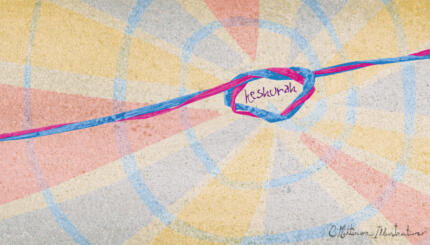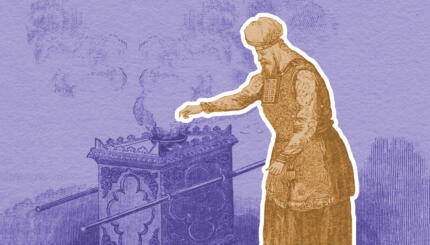Commentary on Parashat Emor, Leviticus 21:1-24:23
It has been said that a tenet of Judaism is the idea of human imperfection. While aspiring to the goal of perfection, with clear instructions in Jewish text and tradition on how to be a good person and do right by God and by others, there is nevertheless a general understanding that no human being actually measures up to that standard. Even in the Torah, there are many examples of heroes and heroines who display prominent, though forgivable, shortcomings.
Parashat Emor, which abounds with mitzvot more than almost any other Torah portion, contains many technical laws pertaining to how people are to worship. Laws concerning the Kohanim (priests) comprise nearly half of the portion. Members of this divine priesthood, descendants of Aaron, possess numerous and weighty responsibilities. The Kohanim are given a set of rules to live by–whom they may marry, how they can grieve, etc. One of these laws seems inconsistent with Judaism’s general comfort with imperfection: “No one at all who has a defect shall be qualified [to perform most of the Temple service].”
Referring to physical ailments, disease, and disability, the selective disqualification of some Kohanim from most aspects of the Temple service is jarring. Without consideration of the origin of the defect or illness, these individuals are allowed only to participate in the eating of the sacrifices. They are forbidden from entering the area behind the curtain or near the altar. “He shall not profane these places sacred to Me, for I, God, have sanctified them.”
I was stunned by the harshness of these words. How could someone’s God-given blindness or spinal contusions defile the holy Temple? How can we reconcile this statute with Judaism’s presumptive commitment to human dignity? And, for that matter, who among us was not created in the image of God?
With your help, My Jewish Learning can provide endless opportunities for learning, connection and discovery.
Gates of Tears
In the millennia since the Temple and its sacrificial cult ceased to exist, the Jewish community has struggled with these questions of community, inclusion, and authority. Even while we mourn the loss of the Temples, we have taken up the challenge of creating a ritual framework that creates space for all who wish to participate in Jewish worship.
In the Talmud, Rabbi Eleazar reflects on the effects of the destruction of the Second Temple. He asserts that “prayer is more efficacious than sacrifice…for from the day on which the Temple was destroyed the gates of prayer have been closed…but though the gates of prayer are closed, the gates of weeping are not closed.”
Rabbi Eleazar claims that while the traditional vehicle for prayer — sacrifice — is no longer available to us, we have evolved an alternate mechanism for relating directly to God — he uses the term “weeping” to capture this personal form of entreaty.
The destruction of the Temple signified the end of a particular era of Jewish observance. In the period that followed and up to the modern day, the symbolically sealed doors of the Temple remain in distant focus. They serve to heighten our other spiritual senses, and draw attention to other ways to achieve closeness with God. Indeed, the gates of tears–of individual spirits and heartfelt feelings — cannot be shut. Prayer is an indestructible communication system, self-sustaining, and available to everyone equally.
Increasing Inclusivity
Moreover, with the minimization of tribal differences among Jews, we are all given permission to express our individual qualities as spiritual beings created in the image of the Divine. In our world of increasing inclusivity, more people are able to truly honor the commandment to “Honor God with whatever excellence God has bestowed upon you.” We continue to wrestle with the Levitical exclusion of those with “defects” in order to give life to a Judaism that is maximally accessible and respectful to all.
This transformation from exclusivity to inclusivity speaks to our individual relationships with God, but it also offers a model for how we should approach the project of maximizing access to resources and rights for all people.
In the developing world, schools are frequently far from home, dangerous to travel to, and expensive to attend. In many parts of the world, sex education and contraceptives are unavailable, denying people the tools they need to understand and respond to the HIV/AIDS pandemic.
Inequality still exists in our world. For many people, vital resources are inaccessible. We could all do more to address these inequalities by, for example, providing funds to those who might fall outside our usual universe of obligation.
The loss of the Temple forced the rabbis to re-examine human-Divine relationships. This process has led to new understandings of inclusivity. Rabbi Eleazar suggested a more democratic, grassroots approach to prayer. As the rabbis struggled with these issues of inclusivity and access through the lens of their time and experience, let us continue in their tradition and apply their learning to the challenges of our own time. And let us aspire to make the resources that we so often take for granted available to all people everywhere.
Provided by American Jewish World Service, pursuing global justice through grassroots change.


